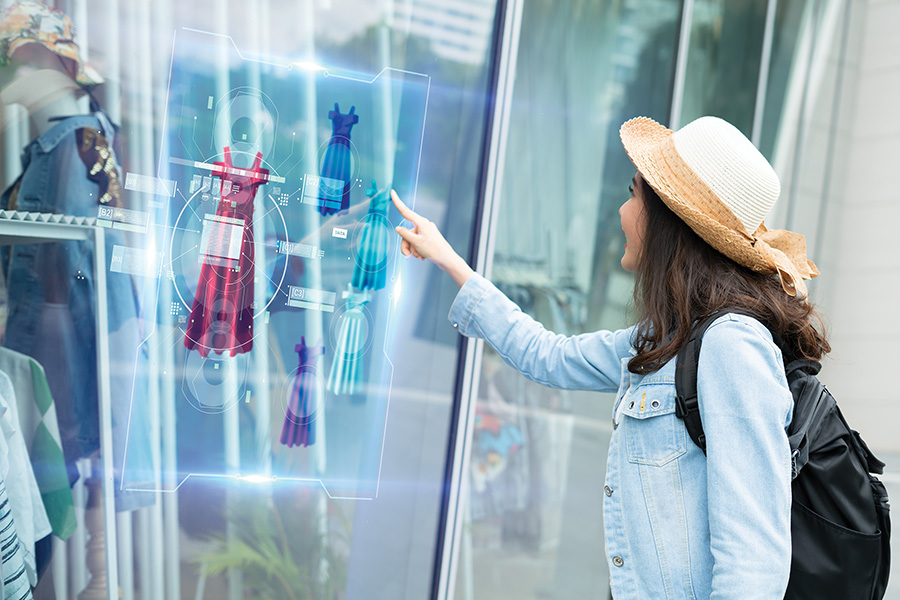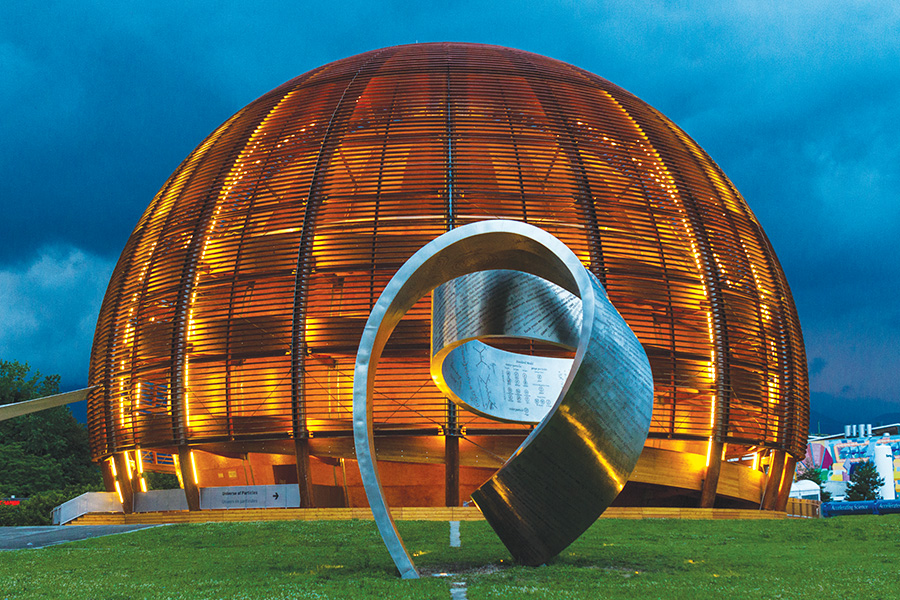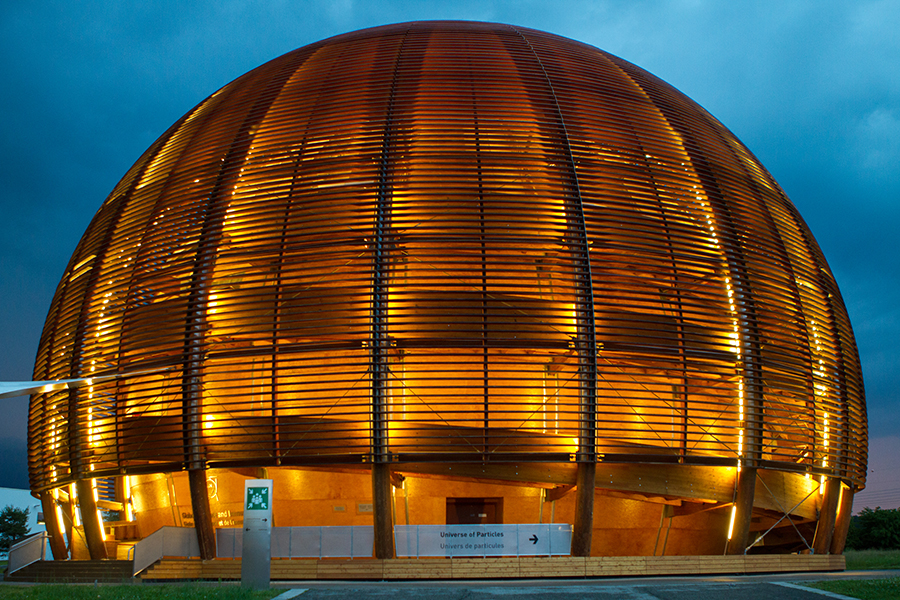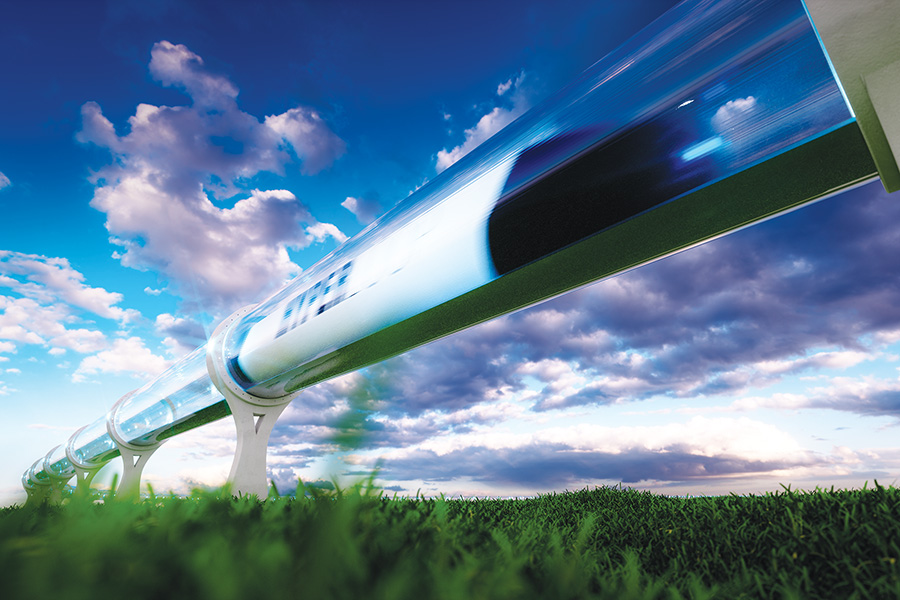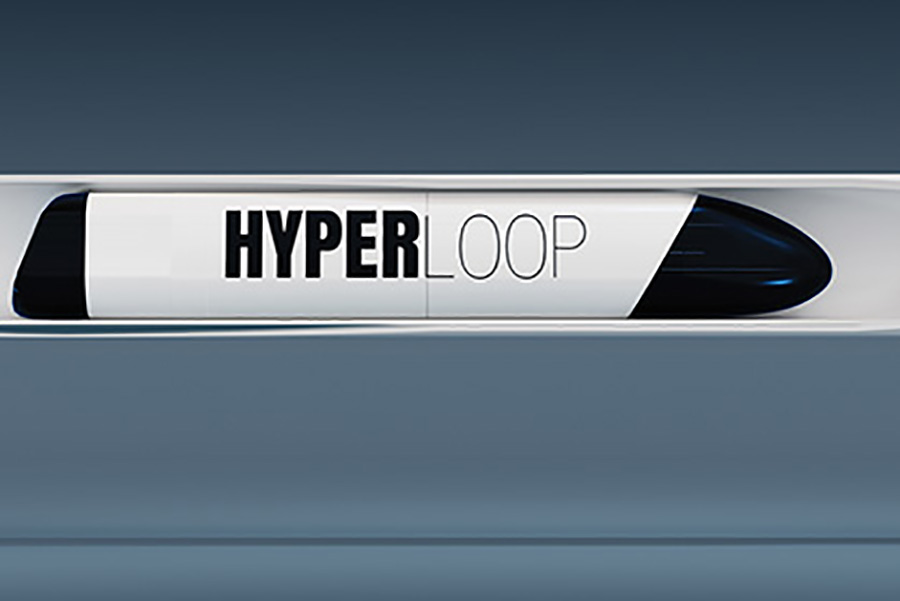This article by Harold Perks, Hames Sharley was first published in SCN’s Little Guns edition, November 2021.

Trickle-down technology is a term that describes the way major technological advancements trickle down into our everyday lives. The internet, which we now take for granted, was created in the 1960s for military purposes but has since become so ubiquitous we can casually shop for groceries or a new outfit on our phones while waiting for a bus. No one could have predicted how the internet would have evolved, but it has nonetheless trickled down into our lives over the past several decades, completely transforming the way we live and shop.
Of course, we don’t know what the next big tech disruption might be, but observing some of the modern-day innovations, we can only assume it will be extraordinary, exhilarating and ultimately beneficial for retail. From billionaires sending themselves into outer space to AI and machine learning technology, there is no doubt in my mind that the technological advancements of today will be adopted and adapted by the retail sector in years to come.
Light-speed technology
One of the most major recent breakthroughs of note is the Large Hadron Collider – one of the world’s biggest and most complicated scientific experiments. Located near Geneva, the European Council for Nuclear Research – known as CERN (Conseil Européen pour la Recherche Nucléaire) – has managed to provide the scientific world with ground-breaking insights into the humble proton, having successfully accelerated protons at each other at 99.999999% the speed of light. The sheer means and method for accelerating particles to near light-speed velocity in a 27km loop, 100m underground, is unrivalled and is truly something straight out of a science fiction novel. But it exists and it works! And we haven’t yet come close to seeing what the trickledown effect of this might be.
- CERN (Conseil Européen pour la Recherche Nucléaire)
- CERN research center, home of Large Hadron Collider
Speed, however, is a common theme among new innovations, with Elon Musk sparking global curiosity when he mentioned the idea of high-speed mass transportation for both passenger and freight in 2012.
Since then, both Virgin Hyperloop One and a French company named Hyperloop Transportation Technologies have successfully built and tested prototypes of high-speed capsules (kind of mini Hadron Collider accelerators) that aim to transport people and freight at a fraction of the cost of air travel.
So what does all this mean for the shopping centre of the future? Well, right now, not much. But in the same way Formula 1 technology influences car technology development, we may see some of these incredible advancements in high-speed transport trickle down to improve the way retail centres connect with customers, cities and regions.
Hyperloop connectivity
If we look 20 to 30 years ahead, Hyperloop technology may become a more common means of long-distance travel – and for shopping centres, this could have enormous benefits.
From a warehousing and logistics point of view, hyperloops could transport products more easily between centres, while inter-state customers could benefit from faster delivery times from their online orders.
- Concept of high-speed traveling in a tube (3D rendering)
- Hyperloop
In terms of the retail centres themselves, ultra-fast Hyperloop access makes suburban retail-based assets in outer Local Government Areas (LGA) far more accessible. With the same functionality of air travel but without the need for large airfields, hyperloop portals can be built in relatively small tracts of land, enabling lightning-fast travel to strategically located centres. This high-speed connectivity will not only make suburban retail centres more attractive to shoppers, but shopping centres can also focus their efforts on upgrading sites with high-speed connectivity, creating intensified suburban hubs that will attract large groups of shoppers from far and wide.
Clicks and bricks – the future of shopping-bag-free retail
Although private car ownership isn’t going away any time soon, the increased pressure on governments to curb global warming may result in greater efforts to reduce individual car ownership or at least discourage our dependence on it. Already, several first-world cities rich in public transport networks show a steady decline in new driver licences for younger demographics. This inevitably creates an additional challenge for bricks-and-mortar retail centres that are public transport deprived.
With restrictions on car ownership, the concerns about the freedoms to do our shopping, and a lack of public transport, we are already seeing technological advancements fill the gap, with drone-delivery and other last-mile fulfilment options being deployed.
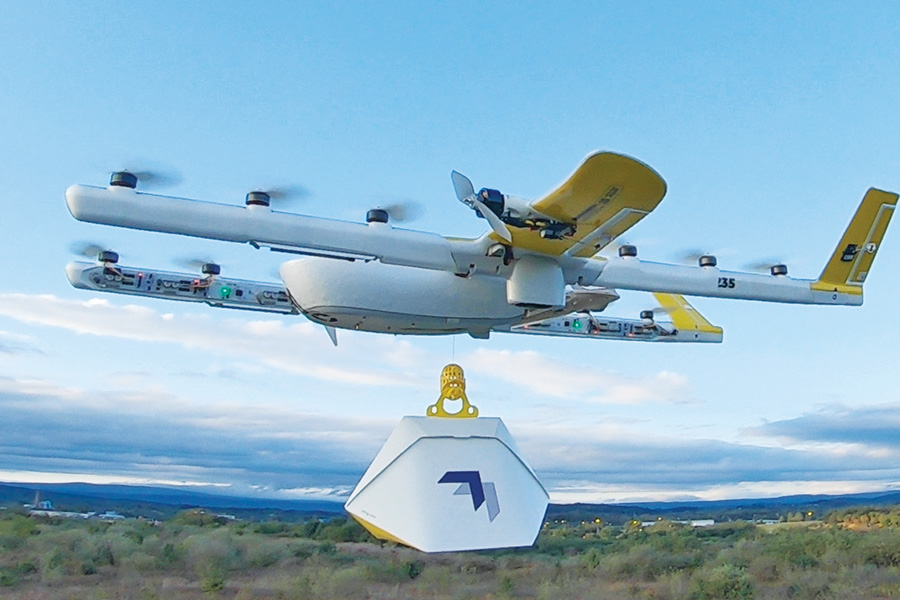
Google’s Wing delivery service
In Queensland, Vicinity Centres has already partnered with Google’s Wing delivery service to make grocery deliveries via drone – and this is just the beginning. Combine technology like this with something like Scentre Group’s Westfield Direct online shopping concept, and shopping centres across Australia will start to drive the ‘clicks n bricks’ evolution.
Although shopping centres at their heart will always be a place for people to meet and gather, the increased focus on sustainability and propensity for online shopping will see greater efforts by retailers and shopping centres to help wean society from unnecessary car travel.
By utilising the latest technologies and adapting them in the most innovative ways, we’ll see retail making deliveries more efficient and more effective while also improving experiences.
Optimistically, we may be heading toward a world where consumers can frequent their local centre at their leisure without the car, using any alternative means, because they don’t need to worry about lugging large parcels home, instead opting for something like drone delivery.
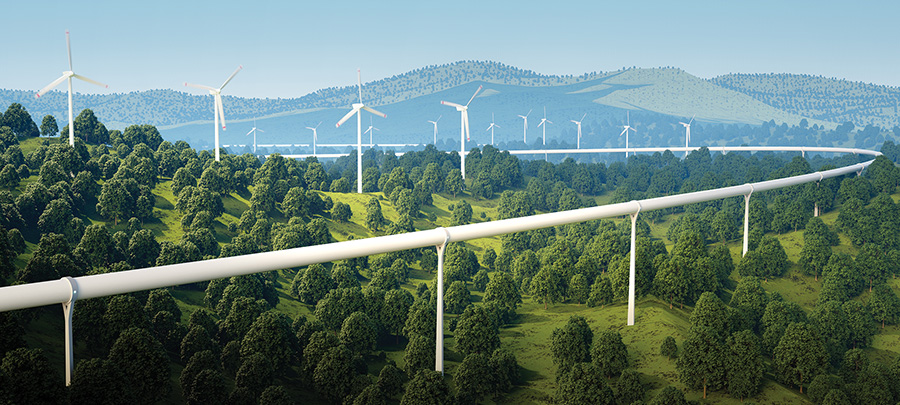
Venture capitalists across the globe are investing billions in clean-tech
A green-tech disruption
New York Times tech journalist Kara Swisher famously predicted that the world’s first trillionaire would be a green-tech entrepreneur. While governments worldwide struggle to plan and implement climate initiatives, venture capitalists across the globe are investing billions in clean-tech because they know it’s where the future is headed.
Although it’s impossible to know what the next game-changing tech invention will be, there’s a good chance it’s going to be eco-driven. And if it is, the way it trickles down into the retail landscape will further change the shopping experience as we know it.
Perhaps we’ll see more shopping centres popping up in remote locations – maybe even deserts – running exclusively on renewable energy and only accessible via Hyperloop. Perhaps we’ll see progressive retail-based asset owners undertaking further diversification, adding hotels, commercial offices, health facilities, resorts, schools, universities, residential and aged-care options, creating small, sustainable community hubs that reduce the need for cars and travel.
Fifty years ago, no one could have predicted quite how much the internet would transform retail, but now we’re living in a reality where we can order groceries from our phones and have them delivered by drone. Whether it’s the Large Hadron Collider or Hyperloop technology, or some clean-tech initiative, we don’t know yet what the next tech disruption will be. But whatever it is, there is no doubt in my mind that the retail sector will continue to be early adopters of the trickle down effect of that technology, bravely capitalising on any opportunity to improve customer experience, novelty, curiosity and progress.


